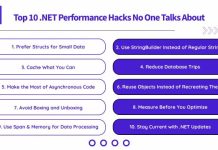
Modern rail networks need steady visibility into the state of the track. Delays often start as small hidden faults that grow into costly repairs. A quiet watch across the line helps teams act before damage spreads. Sensor enabled bases beneath the rails give that silent watch. They gather signals without interrupting traffic. Data shows the load path through the structure. Patterns reveal stress points during heat or rain. Teams can plan targeted care rather than broad fixes. Riders gain safer journeys while operators protect budgets. A simple design with smart data delivers steady outcomes over many seasons. With steady use of connected devices, these tracks can achieve new reliability benchmarks that redefine safety and predict maintenance before issues appear. Such progress transforms rail management into a system that listens, learns, and adapts to every signal of wear through live feedback loops.
Sensor Basics
Sensors placed within the base measure forces vibration tilt and moisture. They sit in protective pockets that shield against water and dust. Wireless modules send values to nearby gateways for secure transfer. The setup needs little space which suits dense corridors. Early trials show reliable uptime with long life cells. These modules help teams see how railway sleepers react to repeated loads. Algorithms compare live values with past baselines to spot drift. Clear thresholds trigger flags so crews can schedule checks. Simple dashboards convert raw numbers into scores for quick review during daily rounds.
Data Streams
A short overview of key signals helps teams pick the right stack. Each item below points to practical use without jargon heavy detail.
- Axle load profiles expose uneven distribution along the rail and base surface.
- Vibration bands highlight loose fasteners plus misalignment near joints and switches.
- Temperature traces reveal sun related expansion along rails plus embedded parts.
- Moisture levels warn about drainage gaps near ballast and shoulder edges.
Power Options
Long life power keeps systems stable without frequent site visits. Solar trickle units support gateways where shade is limited. Energy aware duty cycles stretch battery life. Sleep modes reduce draw during quiet windows. Small capacity upgrades allow cold season margins. Passive harvest from rail motion can add short bursts. Clear power plans prevent sudden blackouts during peak traffic. Field crews prefer unified packs because spares fit every site. Simple connectors cut swap time which reduces trackside exposure for staff.
Alert Logic
This section outlines detection rules that catch issues early with minimal noise. The points below show how to pair math with field common sense.
- Multi sensor voting raises confidence before a message reaches the control room.
- Trend based thresholds adapt over seasons so false signals stay under control.
- Geo fencing routes the right alert to the nearest crew within minutes.
- Escalation tiers push unresolved items to supervisors for rapid direction.
Deployment Steps
Teams need a clear plan that balances speed with quality checks. The short notes here map an end to end rollout flow for new corridors.
- Survey segments then mark candidate bays using past reports plus walk tests.
- Pre drill pockets then place sealed modules using torque guides from suppliers.
- Calibrate nodes using controlled passes then lock baselines for each site.
- Train crews on dashboards then define shift routines for log reviews.
Maintenance Plan
Simple care keeps systems reliable through rough weather and heavy loads. Crews check housings for cracks after major events. Gateways get firmware refresh during planned windows. Nodes undergo recalibration after rail grinding or ballast renewal. Spare kits ride with patrol trucks for fast swaps. Quarterly reports summarize noise drift and uptime for leadership. Cleaning optical windows prevents missed readings during dusty weeks. An annual audit tests random sites for adhesive bond strength. Good records shorten warranty claims which saves money. Clear ownership reduces finger pointing when a device fails during storms.
Risk Control
Strong governance protects data quality and crew safety near live lines. The notes below combine policy with practical steps used by experienced teams.
- Tag every node with unique codes so history stays linked across years.
- Use read only routes from wayside gateways to core systems to limit risk.
- Practice lockout rules during swaps since live rails create serious hazards.
- Keep spare antennas on hand to replace bent parts after wildlife hits.
ROI Metrics
Leaders need crisp numbers that justify scale beyond pilots. These points show how to measure value without complex models or guesswork.
- Fault lead time shows hours gained before a defect becomes service impacting.
- Crew dispatch distance falls when alerts guide teams to exact bays.
- Material usage drops once targeted repairs replace broad mile wide work.
- Availability rises when unplanned slow orders disappear from daily logs.
A sensor rich base under the rail turns hidden stress into readable signals. The plan starts with a tight scope then expands toward full coverage after proven gains. Use small kits to map load paths then tune thresholds based on local patterns. Pair alerts with trained crews so actions follow quickly without confusion. Keep power simple so visits remain rare which cuts lifetime expense. railway sleepers will see fewer unplanned halts plus smoother timetables over months. Simple steps now build a safer network with steady cost control. The future of rail depends on clarity insight and measured response. Through connected tracks, operators can sustain smooth rides while protecting every sleeper from unseen strain.










